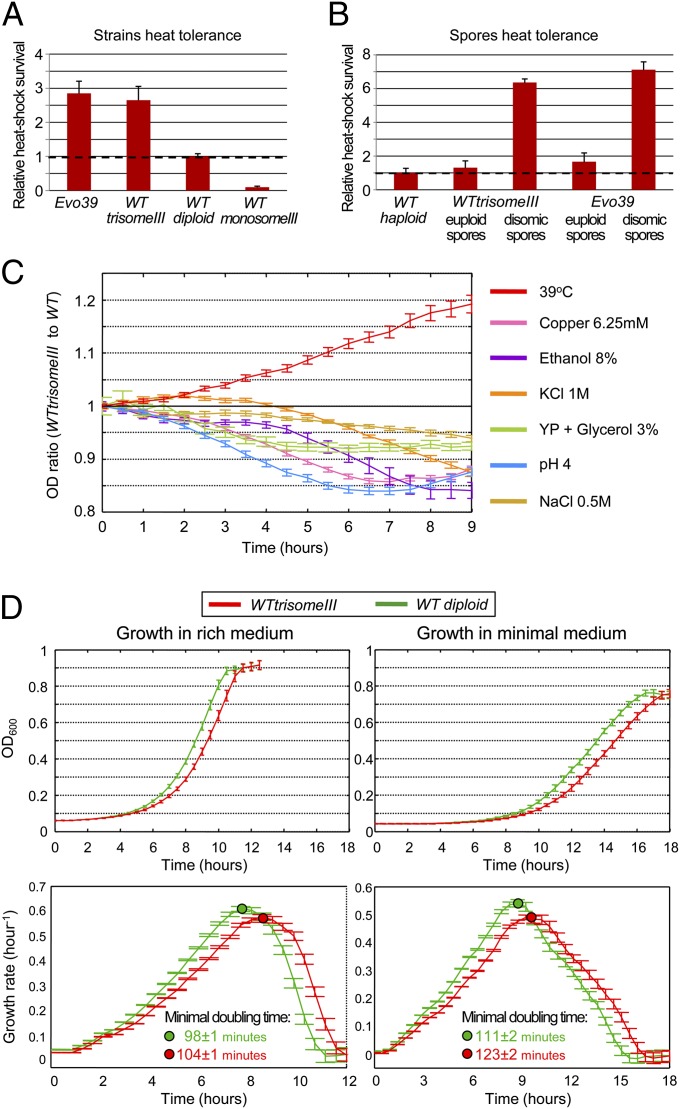Fig. 3.
An extra copy of chromosome III is beneficial under heat, yet it is maladaptive under other conditions. (A) Heat-shock tolerance rates are proportional to the copy number of chromosome III. Heat-shock survival fold change of chromosome III aneuploidic strains compared with a diploid wild type is shown (dashed line). (B) The extra copy of chromosome III is the predominant genetic trait responsible for the increased heat tolerance. Heat-shock survival fold change of spores from WTtrisomeIII and evo39, compared with a haploid wild type (dashed line), presented separately for euploid spores and for chromosome III disomic spores (P value < 8 × 10−5; for spore karyotype, see Fig. S7). (C) The growth advantage conferred by chromosome III trisomy under heat (red line) cannot be attributed to a general stress tolerance. Colored lines represent OD ratios of WTtrisomeIII over a diploid wild type during continuous growth under various stresses (Materials and Methods). (D) The cost of chromosome III trisomy at permissive temperature (30 °C) is increased on minimal medium compared with rich medium. Growth curve measurements of WTtrisomeIII (red) and of a diploid wild type (green) are shown in OD values over time during continuous growth at 30 °C (Upper), in rich medium (Left) and in minimal medium (Right). (Lower) Growth rate analyses, derived from the OD values, and the differences in minimal doubling time between WTtrisomeIII and WT. Data are presented as mean and SEM.

